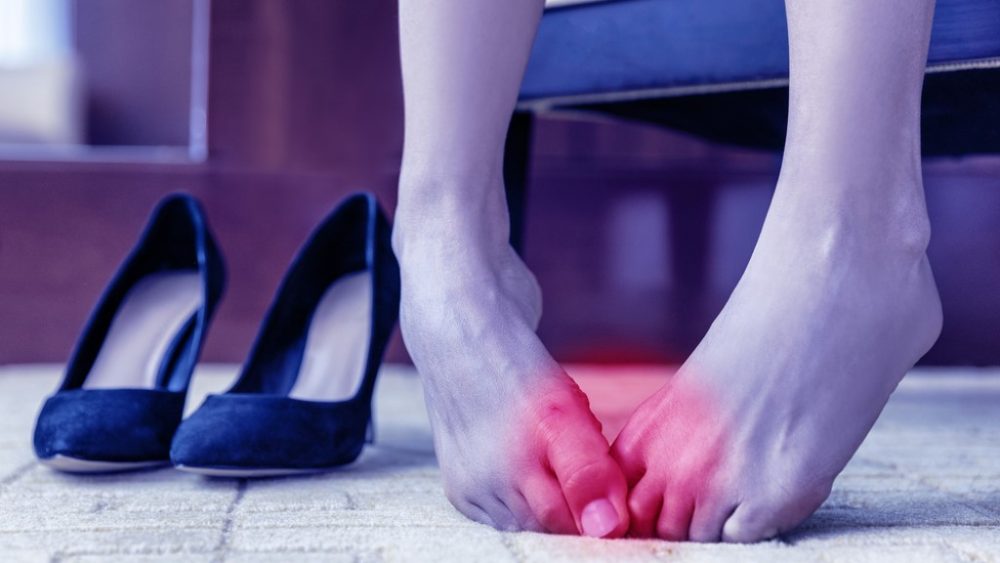The new, minimally invasive bunion surgery

The new, minimally invasive bunion surgery
Posted on Tue Mar 12, 2019
Most people know their onions. Kumar Kunasingam, Consultant Trauma and Orthopaedic Surgeon, knows his bunions.
From his practice in London, Kumar Kunasingam is one of only a handful of surgeons in the UK who performs minimally invasive bunion surgery. We asked him a few questions about the operation.
What are bunions?
Bunions are a change in the lie of some of the bones in the foot causing a bump around the big toe joint. They can be sometimes confused with the bump caused at this joint by arthritis (some of which I can also help with keyhole foot arthritis surgery/keyhole cheilectomy).
What’s the difference between keyhole bunion surgery and open bunion surgery?
‘Keyhole bunion surgery is a game changer’ – the open surgery involves big cuts and a lot of cutting through tissue to then make a long cut through bone and correct the bunion shapes. The keyhole bunion surgery utilizes tiny stab incisions which allow the bone to be cut and fixed keeping the vast majority of the surrounding tissue totally undisturbed.
‘Less is more’ – the smaller cuts cause less pain! Bunions are inherited and with the bunion most generations pass down the brutality of open surgery causing both big cuts and pain often keeping patients off their foot totally or in plaster boots.
My patients who have keyhole bunion surgery walk out of hospital the same day and have a small bandage for 1-2 weeks after which they can start wearing normal shoes! With open surgery patients have a plaster cast or boot and bandages for 6-8 weeks.
‘Early motion is key’ – I advise stretching exercises at 2 weeks and return to work even earlier if needed. All cases have a bespoke element to them – no two feet are the same! Return to sport is under the watchful eye of myself and one of my specialist physiotherapists who have taken the time to see my surgery and understand the key points to getting my patients recovered quickly!
‘Tiny cuts, less pain and quicker recovery are the key differences between keyhole bunion surgery and open bunion surgery!’
What else is involved aside from the surgery?
Accurate assessment and diagnosis is a must to confirm the diagnosis and plan the correct management. As a qualified doctor and surgeon I look at medical and patient specific factors that would need to be considered for surgery and planning smooth recovery from surgery.
X rays are a must and for my self pay patients I encourage them to take these at expert facilities of Oryon Imaging on Wimpole Street which is incredibly well placed around the corner from my sole London practice at the Schoen Clinic London on Wigmore Street. The care and attention to detail of the specialist views needed to diagnose but then also follow up the healing from surgery are second to none.
The beauty of this service is value for cost. In the Harley Street Medical area we are spoilt for choice, but good value and convenience are a serious consideration to my patients, which is a sentiment and service shared and offered at Oryon Imaging for self pay patients.
What are the advantages?
Life is meant to be lived and bunion sufferers know that bunions can be both incredibly painful on the bump of the bunion but also for the second toe and other lesser toes.
The keyhole bunion surgery is a chance to narrow the foot and straighten the great toe and take the bump away in a less painful way allowing for quicker recovery!
Oryon Imaging
Oryon Imaging offers affordable private X-rays for self-funding patients in London’s Harley Street medical district, just a few minutes’ walk from the Schoen Clinic where Mr Kunasingam operates from. We offer bunions X-ray appointments for only £110. Call us to find out more.
Mr Kunasingam
Consultant trauma and orthopaedic surgeon at Schoen Clinic London, 66 Wigmore Street, W1U 2SB
Secretary – Diane – 02038623990
Instagram handle @thesoledr
Specialist in foot and ankle plus sports foot and ankle surgery
BSc(Hons), MBBS(Eng), MRCS(Eng), FRCS(Tr&Orth), DipSEM(Ed), DipOrth
Share this article
Most Recent
Posted on Tue Jul 1, 2025
How Long Does A Shoulder MRI Take?
Posted on Thu Jun 26, 2025
Posted on Thu Jun 26, 2025
Stay up to date
If you’re interested in keeping up with what we’re doing, just leave your email address here and we’ll send you periodic newsletters and other updates.





